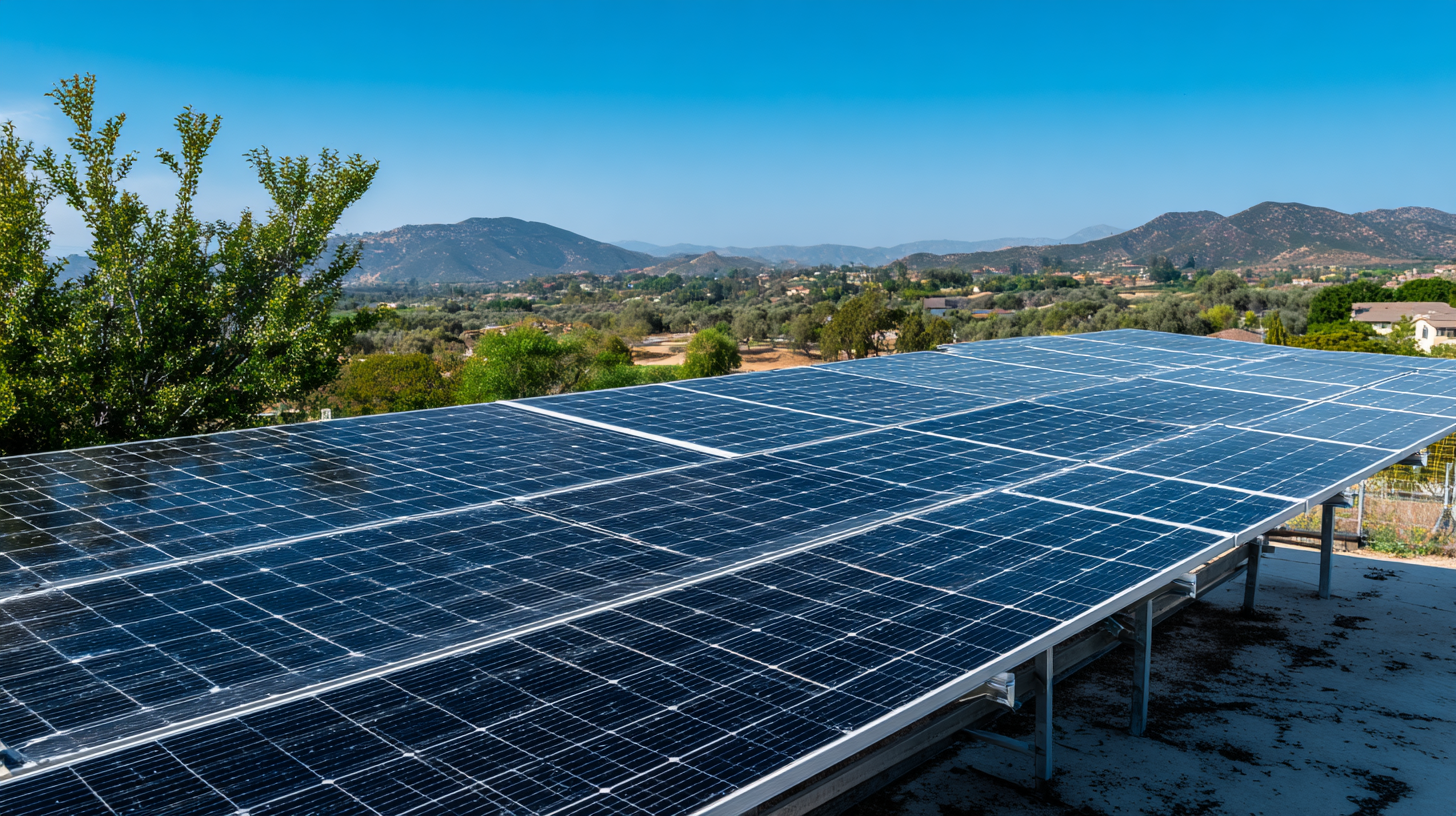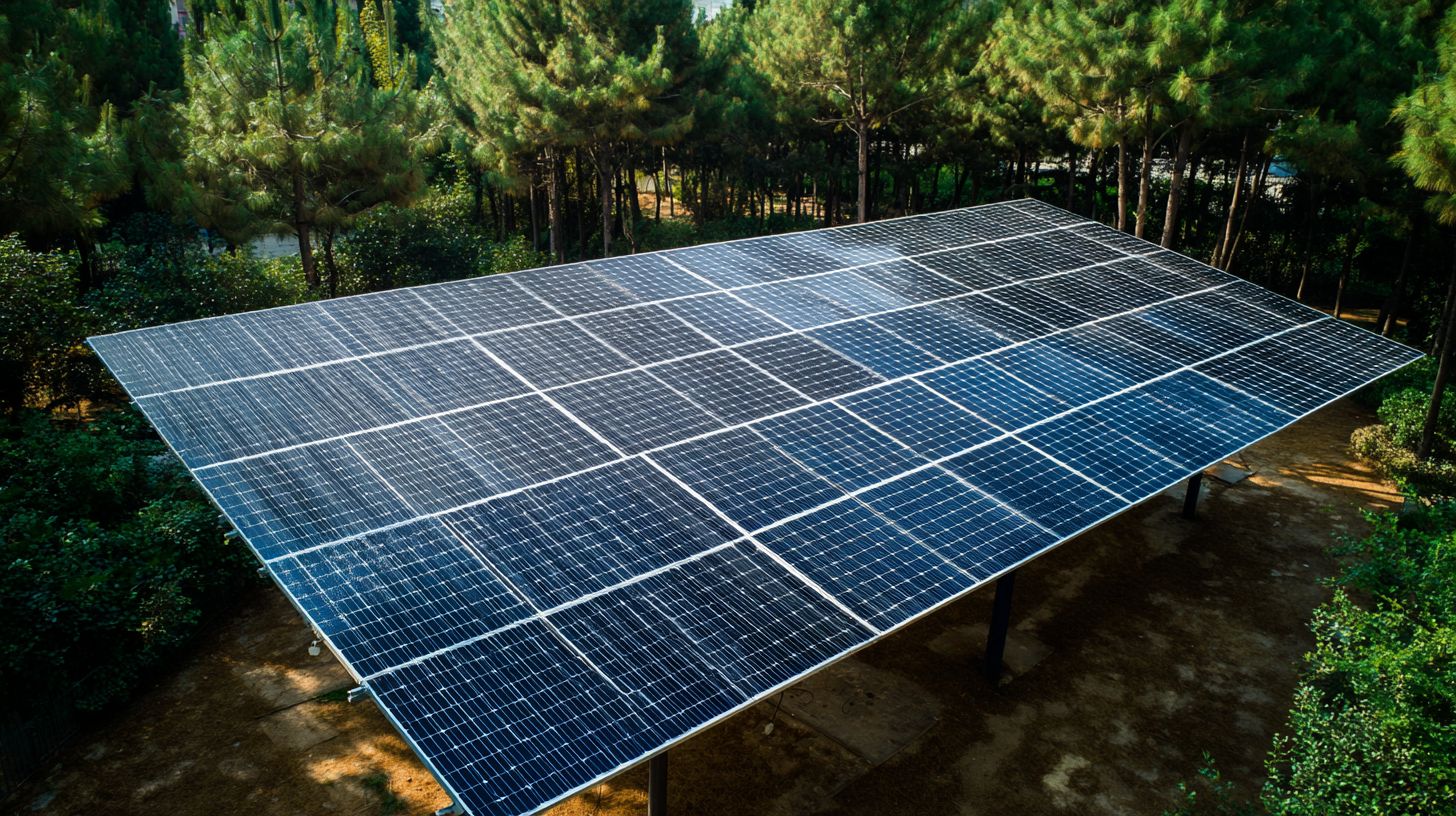Blog
Emerging Trends in Solar Energy for the Best Solar Panels by 2025
As we approach 2025, the solar energy industry is poised for transformative changes that will redefine the market landscape. With the increasing urgency to address climate change and the rising demand for sustainable energy solutions, innovations in solar panels are emerging at an unprecedented pace. This blog will delve into the latest trends shaping the future of solar energy, including advancements in technology, efficiency improvements, and the integration of solar panels into everyday life. By examining these developments, we aim to provide a comprehensive market analysis that highlights the key factors influencing the adoption and success of solar panels in the coming years. Join us as we explore how these trends will impact consumers, businesses, and the environment, paving the way for a brighter, more sustainable future powered by solar energy.

Innovative Solar Panel Technologies Shaping the Future of Energy
Innovative solar panel technologies are at the forefront of shaping a sustainable energy future. One significant advancement is the development of perovskite solar cells, which can transform any surface into a potential energy generator. This breakthrough allows for the integration of solar energy into urban environments, where vertical surfaces like walls and windows can contribute to energy production. Such innovations not only enhance the versatility of solar technology but also pave the way for more efficient and accessible renewable energy solutions.
Another exciting trend involves the evolution of floating solar technology. This approach has gained traction as a viable method to harness solar power without occupying precious land resources. By placing solar panels on bodies of water, we can minimize ecological disruption while maximizing the surface area for energy generation. Furthermore, recent advancements in materials science are playing a pivotal role in developing more effective solar technologies. The combination of these innovations signifies a promising future for solar energy, ensuring that it continues to lead the transition towards a cleaner and more sustainable world.
Understanding the Role of AI and IoT in Solar Energy Efficiency
In recent years, the integration of Artificial Intelligence (AI) and the Internet of Things (IoT) has revolutionized the solar energy landscape, driving innovation and efficiency. According to a report by the International Energy Agency (IEA), the incorporation of AI in solar energy systems can enhance energy production by up to 10% through predictive analytics and real-time data processing. This capability allows for more accurate forecasting of solar generation potential, facilitating better management of supply and demand.
IoT devices play a crucial role in monitoring and optimizing solar panel performance. By employing smart sensors and connected devices, stakeholders can collect extensive data on energy output, weather conditions, and equipment health. A study from McKinsey suggests that IoT applications in energy management can reduce operational costs by as much as 25%. Furthermore, with the deployment of AI algorithms analyzing this data, solar operators can achieve not only improved efficiency but also predictive maintenance, which minimizes downtime and extends the lifespan of solar assets. As we move towards 2025, these technological advancements are set to redefine the solar energy market.
Emerging Trends in Solar Energy for the Best Solar Panels by 2025 - Understanding the Role of AI and IoT in Solar Energy Efficiency
| Trend | Description | Expected Impact by 2025 |
|---|---|---|
| AI Optimization | Utilization of AI algorithms to improve energy capture and efficiency in solar panels. | Increase efficiency by up to 20%. |
| IoT Integration | Smart devices monitoring performance and environmental conditions to enhance solar energy management. | Drastically reduce maintenance costs. |
| Bifacial Solar Panels | Panels capable of capturing sunlight from both sides, increasing energy yield. | Boost energy generation by up to 30%. |
| Energy Storage Solutions | Advanced batteries that enable solar energy to be stored for later use. | Increase energy independence and reliability. |
| Thin-Film Technology | Development of lightweight, flexible solar panels that can be applied to various surfaces. | Expand installation possibilities in urban areas. |
Examining the Environmental Impact of Next-Gen Solar Panels
As the demand for solar energy continues to grow, the environmental impact of next-generation solar panels is becoming a critical focus. With the solar simulator market projected to reach $8.24 billion by 2025 and anticipated to rise at a compound annual growth rate (CAGR) of 4.5% to $11.72 billion by 2033, the spotlight is on innovative technologies, particularly in the realm of perovskite solar cells. These cells, noted for their superior efficiency and reduced reliance on toxic materials, are being developed through groundbreaking methods that primarily utilize water as a solvent, significantly lowering their environmental footprint.
Moreover, advancements in technologies such as TOPCon and HJT highlight the evolving landscape of crystalline silicon cells over the past few years. However, experts suggest that the real excitement lies in the potential of new materials to overcome the limitations of traditional silicon cells within the next five years. Reports indicate that the photovoltaic industry is gravitating towards larger and more efficient N-type solar panels as part of a broader strategy to boost economic competitiveness while aligning with global carbon neutrality goals. This shift not only enhances energy output but also minimizes the ecological consequences associated with solar technology, marking a pivotal moment in the quest for sustainable energy solutions.
Cost Trends and Economic Incentives for Solar Adoption by 2025
As the solar energy market continues to evolve, 2025 is set to be a pivotal year characterized by significant cost reductions and enhanced economic incentives for adoption. The landscape of rooftop solar in England and Wales illustrates this trend, with decreasing installation costs driven by technological advancements and streamlined regulatory frameworks. Homeowners are finding solar energy more accessible than ever, bolstered by various financial incentives that lower the overall investment barrier. Reports suggest that while the initial cost can be substantial, government programs and incentives are crucial in making solar installations financially viable.
Additionally, businesses are increasingly recognizing the long-term benefits of solar energy as a means to cut operating costs and support sustainability initiatives. By 2025, an array of incentives will likely push more companies towards solar solutions, diversifying their energy sources and reducing reliance on fossil fuels. This shift not only aligns with global sustainability goals but also positions businesses strategically in a competitive market focused on renewable energy. The synergy of reduced costs and economic incentives is expected to drive widespread solar adoption, reaffirming the technology's critical role in the transition to a cleaner energy future.

Government Policies Driving the Evolution of Solar Energy Solutions
The evolution of solar energy solutions is increasingly influenced by government policies worldwide. As countries strive to meet climate targets and reduce carbon emissions, they are implementing various incentives to promote solar energy adoption. These can include tax credits, rebates, and grants for both residential and commercial solar installations. Furthermore, net metering laws are becoming more widespread, allowing consumers to sell excess energy back to the grid, which enhances the economic viability of solar energy investments.
Tips for homeowners considering solar panels: Firstly, research local government incentives that could reduce your upfront costs significantly. Secondly, evaluate different financing options, such as loans or leases, which may offer flexibility while making solar energy accessible. Lastly, stay informed about changes in legislation that could affect solar energy programs in your area; this can help you make timely decisions regarding your solar investments and maximize your potential savings.
Moreover, global leaders are collaborating to create an efficient regulatory framework that encourages innovation and competition in the solar market. This collaborative effort is expected to accelerate technological advancements, leading to more efficient and affordable solar panels by 2025. As policies evolve, consumers will benefit from improved energy solutions that align with sustainability goals.


